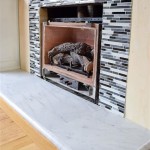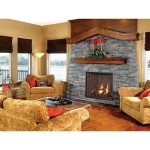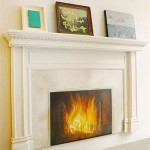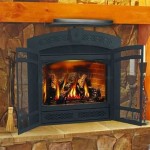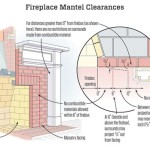Does a Natural Gas Fireplace Have to Be Vented?
Whether a natural gas fireplace requires venting or not depends on several factors, such as the type of fireplace, its installation location, and local building codes. Understanding these factors will help you determine the appropriate ventilation requirements for your gas fireplace.
Types of Natural Gas Fireplaces
There are two main types of natural gas fireplaces: vented and ventless.
- Vented fireplaces require a vent pipe or chimney to exhaust combustion gases outdoors. They are typically installed in existing homes with proper venting systems.
- Ventless fireplaces do not require an external vent. They use advanced technology to burn fuel cleanly, minimizing the production of combustion gases. Ventless fireplaces are suitable for homes without existing venting systems.
Installation Location
The location of the fireplace also influences its venting requirements. Vented fireplaces can be installed virtually anywhere in a home, provided proper venting is in place. Ventless fireplaces, however, have specific installation requirements due to their lack of an external vent.
Ventless fireplaces are typically installed in well-ventilated areas, such as rooms with multiple windows or doors. They can also be installed in bedrooms, bathrooms, and other enclosed spaces if adequate ventilation is ensured.
Local Building Codes
Local building codes may have specific regulations regarding natural gas fireplaces, including venting requirements. These codes can vary from region to region. It is crucial to check with your local building department to determine the specific requirements for your area.
Generally, vented fireplaces are required in new construction homes and buildings with existing venting systems. Ventless fireplaces may be allowed in certain circumstances, such as older homes without proper venting or areas where installing a vent is impractical.
Safety Considerations
Proper ventilation is essential for the safe operation of natural gas fireplaces. Combustion gases produced by burning natural gas can pose health hazards if they are not properly exhausted outdoors. Vented fireplaces effectively remove these gases, ensuring a healthy indoor environment.
Ventless fireplaces, while convenient, do produce some combustion gases. Therefore, it is crucial to follow the manufacturer's instructions carefully and ensure adequate ventilation in the room where the fireplace is installed.

What Are The Best Ways To Vent A Gas Fireplace Zoroast
Gas Fireplace Venting Explained Heat Glo

Vented Vs B Vent Direct Free Dixie S

Direct Vent Vs Natural Www Mygasfireplacerepair Com
Gas Fireplace Venting Explained Heat Glo

Are Vent Free Gas Fireplaces Safe Ventless

If You Have A Gas Fireplace It May Or Not Chimney Flue

4 Types Of Gas Fireplace Venting Options G B Energy
:max_bytes(150000):strip_icc()/ventless-gas-fireplaces-4160746-hero-f9d4bdcd9bd446eb84406de306f790ba.jpg?strip=all)
How To Pick Out A Ventless Gas Fireplace

What Is A Direct Vent Fireplace Fireplaces Learning Center
Related Posts


